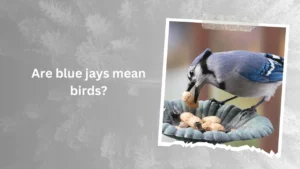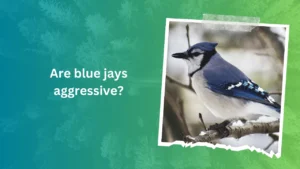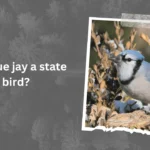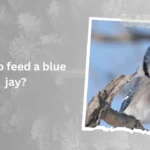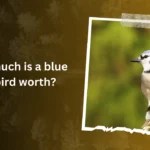When you think of blue jays, perhaps you envision their striking blue feathers or their bold, curious personalities.
But did you know these clever birds don’t just vocalize for the sake of song—they also use their voices strategically to communicate, even with other animals? Blue jays are known to squawk loudly to warn of predators, claim territory, or simply assert their presence, but their interactions with animals like deer remain somewhat mysterious.
Do blue jays really squawk at deer, and if so, why would they go out of their way to communicate with these gentle, plant-eating neighbors? This seemingly unusual behavior could reveal a lot about how animals co-exist in the wild.
In nature, both blue jays and deer have specific roles that help keep ecosystems balanced. Blue jays are vigilant foragers and seed spreaders, famous for their intelligence and sometimes territorial nature.
Deer, meanwhile, are peaceful grazers, often keeping to themselves as they move quietly through forests and meadows. Yet when these two animals cross paths, something interesting seems to happen—blue jays don’t always remain silent.
Observations suggest that they may issue sharp calls or squawks near deer, which has left scientists and bird watchers curious. Could it be a form of mutual warning, or perhaps blue jays simply want deer out of their foraging areas?
In this article, we’ll explore the possible reasons behind blue jays’ interactions with deer, from ecological dynamics to behavioral instincts. Join us as we dive into the natural world of these fascinating creatures and uncover the secrets of their unique relationship.
You might be surprised at the unlikely connections that shape life in our forests and backyards.
Contents
- 1 Blue Jay Vocalizations
- 2 Deer Behavior
- 3 Interactions Between Blue Jays and Deer
- 4 Factors Influencing Interactions
- 5 Ecological Significance
- 6 Conclusion
- 7 FAQ’s
- 7.1 Do blue jays and deer interact frequently?
- 7.2 What do blue jays typically communicate with their vocalizations?
- 7.3 How do deer respond to blue jay calls?
- 7.4 Can blue jays impact deer behavior?
- 7.5 What factors influence interactions between blue jays and deer?
- 7.6 How do blue jays contribute to their ecosystem?
Blue Jay Vocalizations
Blue jay vocalizations are as versatile and vibrant as the birds themselves, serving multiple purposes within their social and territorial lives. These birds are known for an impressive range of sounds, from loud, sharp alarm calls to softer, almost musical songs used to attract mates and establish bonds.
Blue jays’ distinct “jay jay” call is their signature sound, often heard echoing through forests as they assert their territory or warn others of potential threats. They also produce a variety of squeaks, whistles, and even mimicked hawk calls, which can confuse predators or other birds while giving blue jays a moment to regroup or escape.
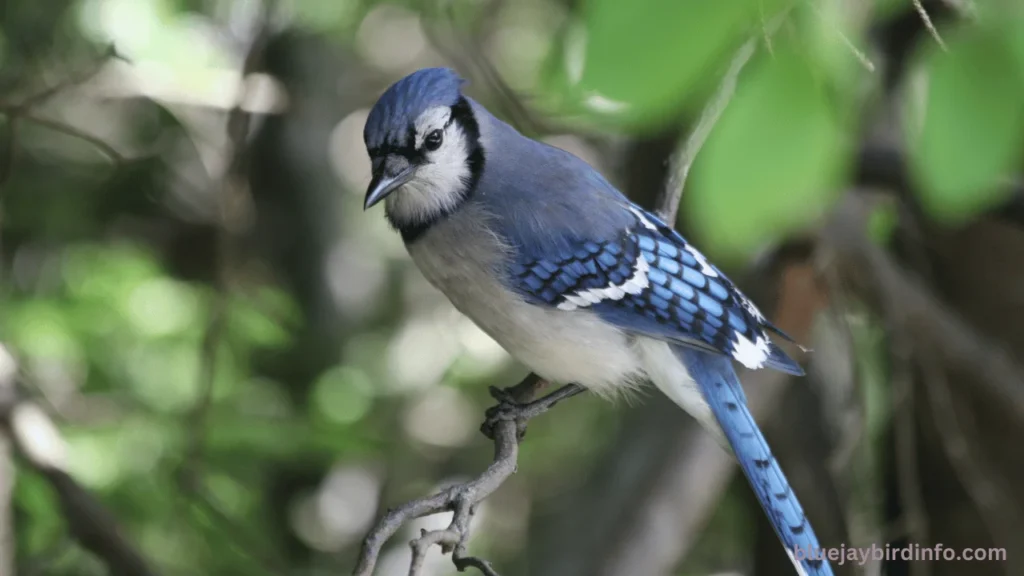
The primary functions of these vocalizations include defending territory, attracting mates, and warning fellow jays of dangers, making vocal communication a vital part of blue jay survival.
When a blue jay perceives a predator, it may call out sharply, alerting others to steer clear. These alarm calls are not only directed at other blue jays but can also serve as warnings to other species nearby, helping to maintain a cooperative watch within the ecosystem.
Interestingly, blue jays may even use their calls to communicate with other animals like deer. While not as common, interactions between blue jays and deer suggest that these vocalizations could serve a mutually beneficial role, perhaps warning of approaching predators or signaling changes in the environment.
This cross-species communication showcases the intelligence and adaptability of blue jays, hinting at a world where animals use sound to bridge their differences and coexist in shared habitats.
Deer Behavior
Deer behavior reflects their gentle yet alert nature, shaped by their role as grazers and their need to avoid predators.
Primarily herbivores, deer spend a large portion of their day browsing on leaves, grasses, acorns, and other vegetation, moving in small groups or alone, depending on the species and season. Socially, they are relatively peaceful animals, interacting primarily with other deer during the mating season or when caring for young.
However, they remain highly alert to their surroundings, constantly scanning for potential threats, such as wolves, coyotes, or human hunters. A quick flick of the tail or stomp of a hoof often signals awareness of danger, helping alert other deer to the presence of nearby predators.
While deer do not likely view blue jays as direct threats, they might perceive the loud calls as potential warning signals. Blue jays’ sharp alarm calls could catch a deer’s attention, as these calls sometimes indicate the presence of a predator nearby.
However, since blue jays and deer share overlapping habitats and occasionally forage in the same areas, there is a small chance of competition for resources like acorns and berries. This shared space may lead to brief interactions, where blue jays vocalize to assert their presence or deter deer from encroaching on their foraging spots.
In the broader ecosystem, deer play a crucial role as grazers, helping shape plant diversity and serving as prey for higher predators.
Their interactions with other animals, whether they are alerted by bird calls or encountering other herbivores, contribute to a delicate balance in their habitats. These interspecies relationships, even with smaller animals like blue jays, reveal how every sound and movement contributes to the complex web of life.
Interactions Between Blue Jays and Deer
Interactions between blue jays and deer have piqued the interest of bird watchers and naturalists alike, leading to a variety of documented and anecdotal observations.
While these two species may seem an unlikely pair, there are instances where blue jays and deer cross paths, often marked by vocalizations and curious behaviors.
For example, blue jays may squawk loudly when a deer approaches their foraging area, perhaps signaling their territorial claims or attempting to deter the larger animal from encroaching on their food sources. Such interactions can highlight the complex dynamics at play in shared habitats.
Several potential reasons for these interactions exist. Territorial disputes could motivate blue jays to vocalize aggressively around deer, as they try to protect their feeding grounds from what they perceive as competition.
Additionally, the curiosity of blue jays may play a role; they are known for their inquisitive nature and may approach deer to assess the situation. This behavior might manifest as chasing or darting around the deer, showcasing their agility and boldness.
Such interactions can also include observed aggressive displays, where blue jays might dive-bomb or circle above a deer, creating a scene that, while not harmful, clearly communicates their discomfort with the deer’s presence.
While these interactions may seem minor, they provide insight into the interconnectedness of species in the wild. Blue jays and deer each play unique roles within their ecosystem, and their occasional interactions can offer valuable lessons about survival strategies and adaptive behaviors.
Understanding these dynamics helps paint a richer picture of life in the forest and the ways different species coexist, each influencing the other in various ways.
Factors Influencing Interactions
Several factors influence the interactions between blue jays and deer, including habitat conditions, food availability, and human activities. In lush, well-maintained habitats with ample resources, blue jays may be less inclined to engage aggressively with deer, as both species can coexist without significant competition.
However, in areas where food is scarce, such as during late winter or early spring, blue jays might become more vocal and assertive as they try to defend their foraging spots against deer, who may be equally hungry.
This dynamic can lead to heightened interactions as both species compete for limited resources, showcasing their adaptability to fluctuating environmental conditions.
Habitat fragmentation or disturbance can further complicate these interactions. When natural areas are divided by roads or urban development, both blue jays and deer may be forced into closer proximity, leading to more frequent encounters.
Such disturbances can alter food availability, pushing deer into areas with concentrated bird populations, increasing competition and potential conflict.
Additionally, fragmented habitats can disrupt migratory patterns and nesting sites for blue jays, leading to stress and altered behaviors that might provoke more defensive interactions with deer.
Individual differences in behavior and temperament also play a significant role in these interactions. Some blue jays may exhibit more aggressive behaviors, while others might be more tolerant of deer nearby.
Similarly, certain deer may respond to the presence of blue jays with curiosity or indifference, while others may become alert or nervous. These personality traits can lead to varied responses during encounters, influencing how each species interacts with the other.
By understanding these factors, we gain deeper insights into the complexities of their relationship, highlighting the delicate balance that exists within ecosystems where multiple species share the same space.
Ecological Significance
The interactions between blue jays and deer carry significant ecological implications that resonate throughout their shared habitats. As both species engage in their daily activities, they can influence local plant communities in notable ways.
Blue jays, known for their seed dispersal behaviors, can help promote plant growth by moving acorns and other seeds away from the parent trees, aiding in forest regeneration. Conversely, deer, as herbivores, can significantly affect the vegetation structure by over-browsing certain plants, which may limit their growth and diversity.
This dynamic interplay highlights the balance of plant communities and the potential for competition for resources.
In addition to impacting plant life, the interactions between blue jays and deer also affect predator-prey relationships within the ecosystem. Blue jays are often vigilant, using their alarm calls to alert other animals to nearby threats.
When they squawk at deer, it may serve to alert other species of potential predators in the area, thereby influencing how animals respond to danger. Deer, on the other hand, may benefit from the presence of blue jays, as their vocalizations could signal the approach of a predator, prompting the deer to remain alert and vigilant.
However, these interactions also carry potential drawbacks. An increase in competition for food resources due to overlapping habitats can lead to stress in both species, potentially impacting their health and reproduction.
Habitat disturbances, driven by human activities, may exacerbate these issues, pushing both blue jays and deer into conflict as they compete for limited resources.
Understanding the ecological significance of these interactions helps illustrate the delicate balance within ecosystems and emphasizes the need for thoughtful conservation efforts to maintain healthy populations of both blue jays and deer, ultimately preserving the intricate web of life in which they coexist.
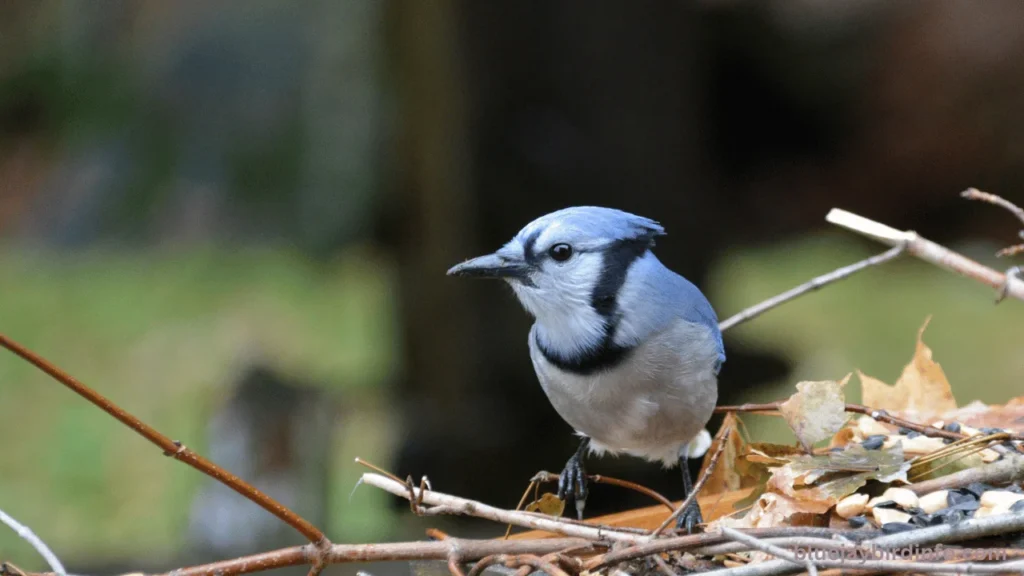
Conclusion
In conclusion, the interactions between blue jays and deer reveal a complex web of behaviors and ecological relationships. We explored how blue jays use vocalizations to communicate territorial claims and alert others to potential threats, while deer maintain their grazing habits and social structures.
Factors like habitat conditions, food availability, and individual behaviors significantly influence these interactions, ultimately impacting plant communities, predator-prey dynamics, and overall ecosystem balance. Understanding these connections highlights the delicate interplay between species and the intricate ecosystems they inhabit.
Recognizing the importance of these wildlife interactions can enhance our appreciation of nature and the various roles different species play within their environments. By studying these relationships, we can better understand the ecological significance of behaviors that may seem trivial at first glance.
As we delve deeper into the lives of blue jays and deer, we are reminded of the interdependence that defines our natural world.
We invite you to become involved in the study of wildlife by participating in citizen science projects or conducting your own observations of blue jays and their interactions with deer and other animals.
Every sighting contributes valuable data to the broader understanding of animal behavior and can aid in conservation efforts. Together, we can uncover the mysteries of the natural world and promote the preservation of these incredible species.
Also, read other articles related to Blue Jay Habits!
FAQ’s
Do blue jays and deer interact frequently?
Interactions are relatively infrequent, but they can occur, especially when food resources are limited.
What do blue jays typically communicate with their vocalizations?
Blue jays vocalize to establish territory, attract mates, and alert other animals to predators.
How do deer respond to blue jay calls?
Deer may perceive blue jay calls as warning signals and become more alert to their surroundings.
Can blue jays impact deer behavior?
Yes, blue jays can alert deer to potential threats, influencing their responses to predators.
What factors influence interactions between blue jays and deer?
Habitat conditions, food availability, human activities, and individual behaviors all play a role.
How do blue jays contribute to their ecosystem?
Blue jays aid in seed dispersal, helping to promote plant diversity and forest regeneration.




